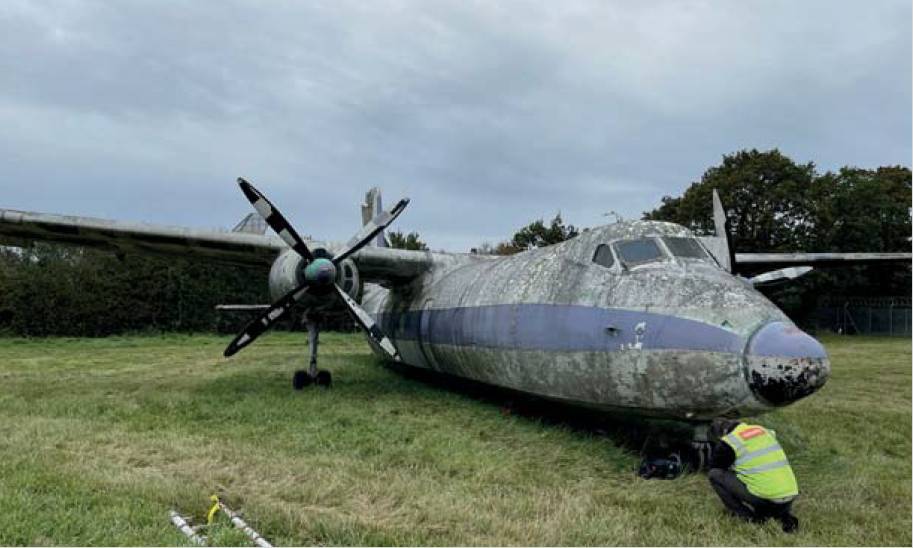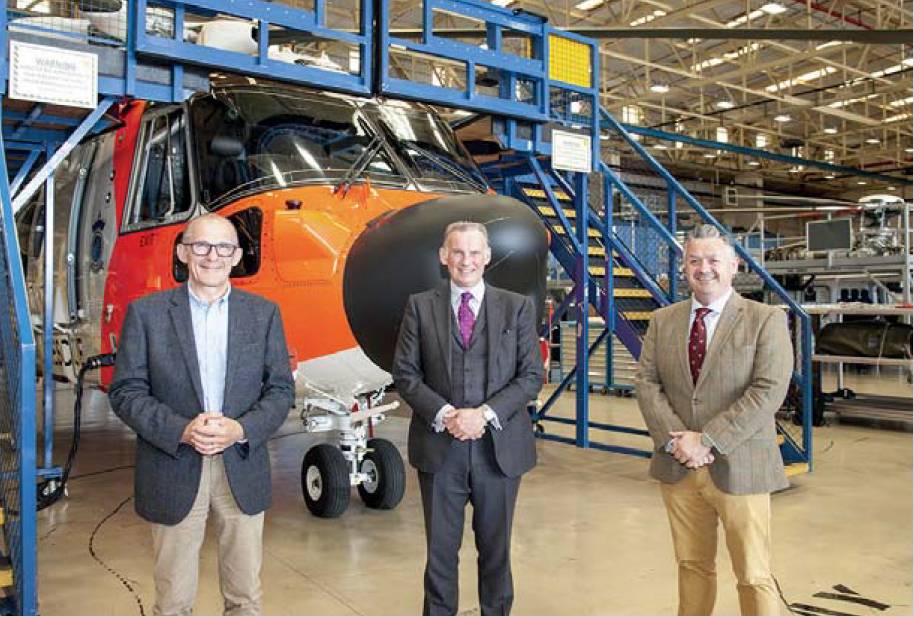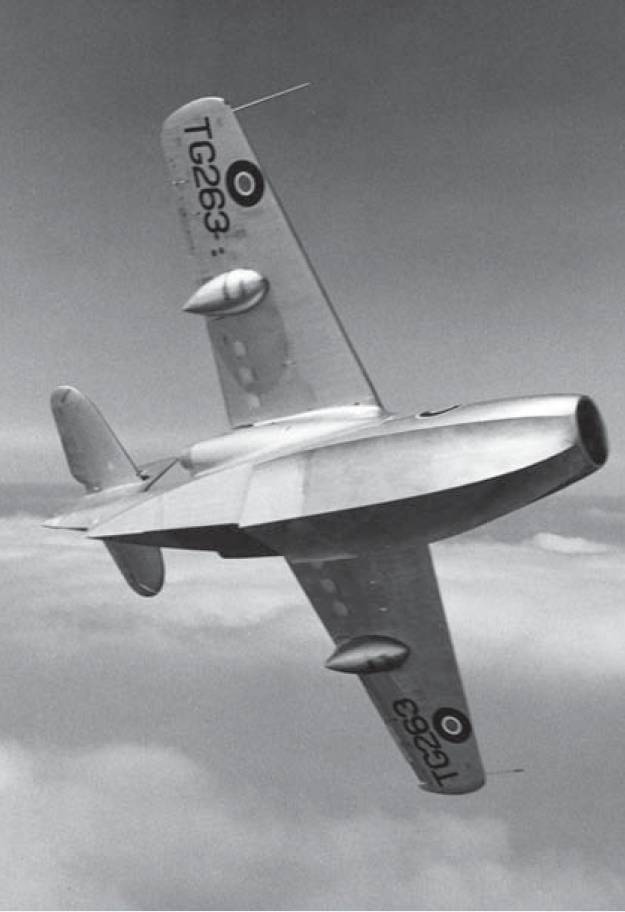Transmission
Letters and online
@aerosociety | www.aerosociety.com | LinkedIn | Facebook
Belgian Chinooks?
@SabastiaanWante [Belgium asking for pricing details for CH-47, says Boeing] Makes sense, After buying F35s, the only real support we could give to NATO is a functioning air force. Some proper choppers would help.
@justcallmatt Amazing the longevity that airframe has.
@sandP501 we will be able to afford 0.73 of them.
@jeff21461 finally seeing some brains work. NH-90 should have never been bought in place of an actual heavy transport helicopter.
Flightpath to the Future
@penandpaper1989 [On The UK DfT ‘Flightpath to the Future’ ten-point plan for aviation(1) ] Bold statements. I look forward to watching the implementations unfold.
@RagsandRuby Offers no guarantees over the next ten years for cuts in emissions, noise, or air pollution. Those gains will all need to be fought for.
Youth in Aerospace
John Vincent [Replying to Employers test new approach to plug skills gap in engineering(2) ] Good stuff. Trouble is similar articles were being written in 1976 when I was at Yeovil college doing an EITB apprenticeship.
Editor-in-Chief at Museum of Flight
@CrazyTitan97 [Replying to @RAeSTimR at the Seattle Museum of Flight] went there last Thursday. was the best aviation museum I’ve ever been to
@Rudi_B Absolutely loved it there when we visited a few years ago, and we were treated to a surprise airshow by the blue angels too. Although the planes were more spread out back then as look quite packed in now
@Grover_P_Mayank DC-2 looks like odd boy out.
@gregscroggin Going in a month. Can’t wait
@nigelmcd Just envious. Definitely on my bucket list
Clock ticking to save Gatwick’s historic Herald
 UKHAT
UKHAT
The UK Heritage Aviation Trust is aiming to raise £60,000 to dismantle and relocate Handley Page Herald G-CEXP from Gatwick Airport to its base at Sellindge in Kent. Time is limited though, according to UKHAT Chairman Duncan Halford, “XP needs to be out of Gatwick by the end of October 2022 otherwise she is in danger of being cut up.”
Jill R Meyers FRAeS receives Katharine Wright Trophy
The National Aeronautic Association (NAA) has awarded Jill R Meyers FRAeS the 2022 Katharine Wright Trophy.(3) The trophy is awarded in partnership with the Ninety-Nines International Organisation of Women Pilots and US-based Meyers is being recognised for “40 years of dedication to the aerospace industry and tireless commitment as a volunteer role model, working to educate and inspire girls around the globe.”
RAeS President and CEO visit Leonardo in Yeovil

Air Cdre Pete Round’s first visit since becoming President of the Royal Aeronautical Society was to Yeovil on 19 May to tour the Leonardo factory and to be a guest of to the RAeS Yeovil branch for the annual Stringfellow and Henson lecture. He is seen here (left) with RAeS CEO David Edwards (right) flanking Leonardo Helicopters’ Alisdair Wood who is also Chair of the Yeovil branch, a Society Trustee and Council Member.
Returning to the UK in 1946, my father was posted to the Marine Experimental Unit at RAF Felixstowe. As a then 6-year-old, already fascinated by aeroplanes, I would peer through the security fence and admire the sleek lines of the three prototype Saunders-Roe SR.A./1s amongst the Sunderland and Walrus aircraft being variously launched and retrieved.
I recall be distraught when one crashed not far off the Felixstowe seafront whilst rehearsing for a Battle of Britain display.
I believe a second later crashed in Scandinavia.
But it was not until 2007 when visiting Duxford* that I spied the survivor on display. Its two Metro-Vick Beryl engines pioneered axial flow compressors and annular vaporising combustion chambers and each of these radical design features were later developed by Armstrong Siddeley Motors in Coventry (where my aviation career started) in its famous Sapphire and Viper engines.
PS: readers might like to see the video of the SR.A/1 on YouTube(4)
Mike Cuming CEng MRAeS
*The sole surviving SR.A/1 can now be seen at the Solent Sky museum in Southampton.
Future hydrogen flight: correcting the assumptions
With reference to recent correspondence [AEROSPACE, June 2022] on the Aerospace Technology Institute’s FlyZero project, we would like to correct some assumptions on the project’s approach to hydrogen storage onboard its concept aircraft. Before selecting the designs for three concept aircraft (midsize, narrowbody and regional), the FlyZero team looked at many aircraft designs and ways of storing hydrogen on the aircraft.
Each was assessed against a wide range of requirements – which did include consideration of the certification process – and this led the team to select the three concepts that we announced at the project’s conclusion. configurations possible for future aircraft powered by hydrogen. They are designed to illustrate the art of the possible. Hydrogen aviation technology is at a nascent stage of development, making it virtually impossible for anyone to make definitive statements on future aircraft design. It is worth noting, however, that concept aircraft from Airbus and Germany’s DLR have reached similar conclusions to FlyZero regarding the location of hydrogen within the aircraft.
The principal point of the FlyZero output is to showcase future technology and the opportunities for UK aerospace, and to encourage the sector to discuss and collaborate.
Ultimately it will be for the OEMs to decide on the best technology for their next-generation fleets, and we want to ensure that UK companies are well-informed and prepared to seize those future opportunities.
There will be a lot more debate in the coming years about what that future will look like, and part of the role of the ATI is to encourage and facilitate those discussions.
We want to hear from people across the sector. There are many opportunities to meet the ATI at industry events, including the Farnborough Air Show, or we welcome direct engagement through our web site.
Prof Simon Weeks CTO - Aerospace Technology Institute
From the RAeS photo archives
 RAeS/NAL
RAeS/NAL
Avro Shackleton MR2, WL796, at the 1953 Farnborough Air Show. It is carrying a Mk3 lifeboat. First flying in 1949 and entering service two years later, the Shackleton was originally intended to be replaced by the Hawker Siddeley Nimrod by the 1970s, but a need to provide Airborne Eearly Warning following the withdrawal of the Fairey Gannet saw MR2s fitted with AN/APS-20 radar as an interim measure from 1972. and redesignated the AEW2. As such, the Shackleton eventually saw 40 years of service,. finally retiring on 30 June 1991 following the entry into service of the first Boeing E-3D Sentry AEW1s.
---
1. https://assets.publishing.service.gov.uk/government/uploads/system/uploads/attachment_data/file/1078684/flightpath-to-the-future.pdf
2. https://www.ft.com/content/dfa95dd4-9276-479e-be9c-ed7cff444e4c
3. https://naa.aero/awards/awards-and-trophies/katharine-wright-award/k-wright-2020-2029-recipients/
4. https://www.youtube.com/watch?v=IXuZzyzyIco
 UKHAT
UKHAT


